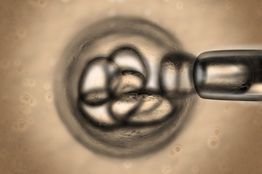
Stem cells – The high potential growth engine
The Nobel prize for Physiology to two stem cell research scientists in 2012 has firmly put the spotlight on this promising field of biotechnology. Sir John Gurdon and Dr Shinya Yamanaka shared the prestigious award for their work on reprogramming adult stem cells that has opened new vistas in stem cell research.
Many countries in the Asia Pacific region are taking big strides in this field. According to GBI Research, the stem cell therapy market in APAC, which includes China, India, Japan, Singapore and South Korea, was valued at $545 million in 2012. It is projected to grow at a compound annual growth rate (CAGR) of 10 percent from 2012 to 2018, to reach $972 million in 2018.
Also read:
Mr Vasant S Gaikwad, analyst with GBI Research, says India, with close to 78 percent of market share by value, dominated the stem cell therapy market in 2012 followed by China (20 percent) and South-Korea (two percent). "India, South Korea and China would dominate the APAC stem cell therapy market in the future," he adds.
The US FDA, which largely remains a benchmark for regulatory bodies in other countries, until now has only one approved stem cell product, Hemacord. It is a cord blood-derived product manufactured by the New York Blood Center and used for specified indications in patients with disorders affecting the body's blood-forming system.
In the APAC countries, very few stem cell therapies have been introduced onto the market. Mr Gaikwad says that South Korea can be described as a pioneer in the field of stem cell therapy. The country, which suffered a setback with the Hwang-Woo-Suk scandal in the last decade, has approved products for indications such as Hearticellgram-Acute Myocardial Infarction (HCG-AMI), knee cartilage injury (Cartistem), and Crohn's disease anal fistula (Cupistem).
Japan too has been a leader in stem cell research. Most recently, a team of scientists in Japan showed that stem cell technology can be used to rejuvenate immune cells to fight diseases such as cancer and HIV/AIDS. The report was published in the journal Cell Stem Cell. To boost research, the Japanese government pledged around $400 million (30 billion Yen) over the next 10 years for stem cell research. The country is also setting up a stem cell bank of 75 induced pluripotent stem cell (iPS cell) lines intended for future therapies.
In India, both the industry and academia are showing keen interest in the field. According to GBI Research, stem cell therapy in the country has witnessed growth, which can be attributed to increased participation from industry and academia. The research in India focuses on diseases that have high unmet needs or high prevalence, such as diabetes mellitus among others. Limbal stem cell therapy has been used successfully for the treatment of corneal blindness in India.
According to Mr Gaikwad of GBI Research, of more than 100 clinical programs for stem cell therapy in the APAC region, only nine R&D programs are in late stage of developments (phase II and phase III) and are likely to hit the market within the next four to five years.
In 2012, Health Canada became the world's first regulatory body to approve a manufactured stem cell product, Prochymal (remestemcel-L), a stem cell therapy by Osiris Therapeutics for the treatment of acute graft-vs-host disease (GvHD) in children. The New Zealand regulatory body too has approved the product.




